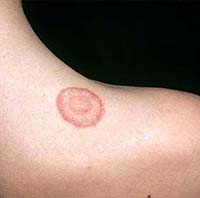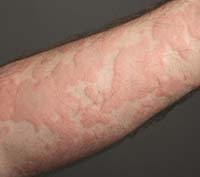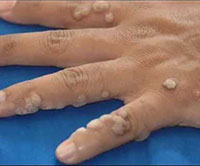ACNE & ACNE SCARS
 Acne is a disorder of pilosebaceous units. It is the most common skin disease with a prevalence of 35%–90% in adolescents. It may persist into or develop de novo in adulthood. The disease causes significant physical and psychological morbidity especially in young adults.
Acne is a disorder of pilosebaceous units. It is the most common skin disease with a prevalence of 35%–90% in adolescents. It may persist into or develop de novo in adulthood. The disease causes significant physical and psychological morbidity especially in young adults.
Besides genetic predisposition, other major factors include the action of androgenic hormones, diet, pre-menstrual flare, pregnancy, stress, poor hygiene, excessive sweating. Pricking acne with nail or any sharp object as well as natural wound healing may lead to scar formation.
Acne in adolescents has currently been linked to the Western diet. High glycemic load and dairy protein consumption both increase insulin/insulin-like growth factor-1 (IGF-1) signaling that is superimposed on elevated IGF-1 signaling of puberty.
The current effective strategies of management recommended by the global alliance are directed toward one or more of these pathogenic factors and include topical and systemic antibiotics and retinoids, benzoyl peroxide, azelaic acid, salicylic acid and oral antiandrogens, depending on the severity of the disease.
Chemical peels, microdermabrasion, dermaroller, intralesional injections & cryotherapy, acne scar surgeries, laser resurfacing are the treatment modalities for post acne hyper pigmentation and scars.
FUNGAL INFECTION / RING WORM
 Ring worm is the most common agents of superficial fungal infections worldwide and widespread in the developing countries, especially in the tropical and subtropical countries like India, where the environmental temperature and relative humidity are high. Other factors such as increased urbanization including the use of occlusive footwear and tight fashioned clothes, has been linked to higher prevalence.
Ring worm is the most common agents of superficial fungal infections worldwide and widespread in the developing countries, especially in the tropical and subtropical countries like India, where the environmental temperature and relative humidity are high. Other factors such as increased urbanization including the use of occlusive footwear and tight fashioned clothes, has been linked to higher prevalence.
Fungal infection can result from human-to-human, animal-to-human spread. Domestic animals are an important factor in the transmission of organisms. Another important risk factor in acquiring tinea corporis is having a personal history of, or close contact with, a person having fungal infection. Other factors - include occupational or recreational exposure (e.g. military housing, gymnasiums, locker rooms, outdoor occupations, wrestling), contact with contaminated clothing and furniture, and immunosuppression.
Prevention of recurrent disease is important. Preventative measures include wearing loose clothing, drying thoroughly after bathing, maintaining proper hygiene in students staying in hostel, weight reduction (if obese), laundering of contaminated clothing and linens, and using topical powders.
Topical antifungals are beneficial in treating common localized infections. Systemic antifungal therapy is required to cure certain infections. Newer antifungal drugs provide more options for systemic therapy... The addition of products containing glycolic or lactic acids or urea may help reduce the amount of hyperkeratosis in infections of palms and soles. Debridement and shaving of the affected hairs in combination with oral antifungal therapy are typically effective in the treatment.
PSORIASIS
 Psoriasis is a chronic disorder that results from a genetic predisposition combined with triggering factors, e.g. trauma, infections or medications. Obesity, increased alcohol consumption, and an increased incidence of smoking have all been associated with psoriasis.
Psoriasis is a chronic disorder that results from a genetic predisposition combined with triggering factors, e.g. trauma, infections or medications. Obesity, increased alcohol consumption, and an increased incidence of smoking have all been associated with psoriasis.
In Psoriasis, skin cells grow too quickly. Faulty signals in the immune system cause new skin cells to form in days rather than weeks. The body does not shed these excess skin cells, so the cells pile up on the surface of the skin and lesions form.
Psoriasis is not contagious. You cannot get psoriasis from touching someone who has psoriasis, swimming in the same pool, or even intimate contact. The most common sites of involvement are the scalp, elbows and knees, followed by the nails, hands, feet and trunk.
Treatment:
The chronic nature of the disease necessitates adoption of a long-term approach with avoidance of dramatic short-term ‘fixes’ that may even produce a more reactive disease state. Oral and topical medications prescribed by dermatologist, phototherapy, healthy diet and avoidance of triggering factors play a pivotal role in its management.
ECZEMA & ATOPIC DERMATITIS
 Eczema, which refers to roughened, flaky, or scaly skin that is less flexible than normal and dry to feel, is relatively common problem in all age groups, but is more common in elderly individuals.
Eczema, which refers to roughened, flaky, or scaly skin that is less flexible than normal and dry to feel, is relatively common problem in all age groups, but is more common in elderly individuals.
Eczema can occur on any part of the body; however, in infants, eczema typically occurs on the forehead, cheeks, forearms, legs, scalp, and neck. In children and adults, eczema typically occurs on the face, neck, and the insides of the elbows, knees, and ankles. In some people, eczema may "bubble up" and ooze. In others, the condition may appear more scaly, dry, and red. Chronic scratching causes the skin to take on a leathery texture because the skin thickens (lichenification).
ATOPIC DERMATITIS :
Atopic dermatitis (AD) is a common skin disease worldwide that may occur at any age, but usually arises before the age of 5 years. Typically, there are three stages: infantile, childhood and adulthood.
Respiratory allergy is commonly (70% of patients) associated with childhood and adult AD. The most frequent allergens are dust mites, pollen, animal dander and molds. Food allergies occur primarily in infants and children with moderate to severe AD (up to 40% of such patients, particularly infants with severe, refractory disease) . Cow's milk, eggs, peanuts, soy and wheat are the most common offenders, and egg intake is most often linked to AD exacerbations. Reactivity to peanuts (as well as tree nuts, fish and shellfish) tends to persist, but children usually ‘outgrow’ sensitivities to other food allergens.
MANAGEMENT :
Conventional therapy entails avoidance of irritants when possible and the use of thick emollients to hydrate the skin. Topical corticosteroids have been the mainstay of treatment. Other therapies such as topical calcineurin inhibitors, phototherapy, antimicrobials, antihistamines and systemic immunosuppressive agents are utilized in accordance with specific clinical situations, severity and treatment response.
URTICARIA
 Urticaria ( also known as Pitti / Shilas) is characterized by transient skin or mucosal swellings due to plasma leakage. Superficial dermal swellings are wheals, and deep swellings of the skin or mucosa are termed angioedema. Wheals are characteristically pruritic and pink or pale in the center.
Urticaria ( also known as Pitti / Shilas) is characterized by transient skin or mucosal swellings due to plasma leakage. Superficial dermal swellings are wheals, and deep swellings of the skin or mucosa are termed angioedema. Wheals are characteristically pruritic and pink or pale in the center.
There are several recognizable causes of urticaria including allergy, autoimmunity, drugs, dietary pseudo allergens and infections. Many cases remain unexplained (‘idiopathic’) even after full evaluation. Diagnosis is based primarily on the history and is supported by investigations, including blood tests, physical and dietary challenges, skin tests and skin biopsy.
Management :
Urticaria is a common disorder that may cause considerable distress and last for years, but it can often be alleviated by appropriate management.
The best treatment for urticaria is to find and eliminate the underlying cause/precipitating factor like food, medicine, stress, etc. The most common foods that cause urticaria are: nuts, chocolate, shellfish, tomatoes, eggs, berries, and milk. Food additives and preservatives may also cause hives. Hives may appear within minutes to several hours after eating. Common Medicines that precipitates urticaria include Antibiotics, pain medications, sedatives, diet supplements, arthritis medication, vitamins, herbal supplements, eye and eardrops, laxative or any other over the counter drug.
Antihistamines and Antipruritic lotions are prescribed to provide relief and work best if taken on a regular schedule to prevent hives from forming. If not improved, other medications and alternative therapies can be administered.
WARTS
 Warts are non-cancerous (benign) skin growths that develop on different parts of the body and can take on various forms. They are caused Human Papilloma virus.
Warts are non-cancerous (benign) skin growths that develop on different parts of the body and can take on various forms. They are caused Human Papilloma virus.
Warts are passed from person to person, sometimes indirectly. The time from the first contact to the time the warts have grown large enough to be seen is often several months. Warts can be of various size and shapes depending on site of occurrence. It can be common warts, flat warts, planter warts, mosaic warts, genital warts.
Multiple treatment modalities like excision, removal by RF cautery, application of various medicines like TCA, Salicylic acid, Podowart, Imiquimod etc, available.
Why we need to treat warts ?
Many a times warts go unnoticed and untreated for years and many people do not require treatment as warts fall off because of good immunity. In case of multiple, recurrent warts, as it is a contagious viral infection, it may lead to infection in other family members, sexual partner. Few viral strains may lead to cervical carcinoma and pose a serious hazard to community.
Newer modalities like auto implantation and vaccine are under research and quite successful. These treatments are also available at “SPARSH”.
VITILIGO
 Vitiligo is a skin disorder in which the person develops white spots on the skin. These spots occur when pigment cells called “melanocytes” are destroyed and the pigment melanin can no longer be produced.
Vitiligo is a skin disorder in which the person develops white spots on the skin. These spots occur when pigment cells called “melanocytes” are destroyed and the pigment melanin can no longer be produced.
The impact of this disorder on quality of life is very severe in many patients. It is neither a taboo nor due to bad karma. Vitiligo affects approximately 0.5-2% of the general population worldwide, and it may appear any time from shortly after birth to old age. The average age of onset is approximately 20 years.
The precise cause of Vitiligo is not known. A combination of genetic, immunological and neurogenic factors is of major importance in most cases. Trauma of any kind (physical, mechanical, chemical, emotional) too can trigger off the disease process. Stress is often implicated as a trigger factor. Vitiligo may be associated with other conditions like hyperthyroidism or hypothyroidism, vitamin B12 deficiency, Addison’s disease , Alopecia areata and or uveitis.
Treatment for Vitiligo
The aims of vitiligo treatments are repigmentation and stabilization of the depigmentation process.
A lot of methods are available for Vitiligo treatment ranging from applying some topical creams, oral medicines, UVA /UVB rays, psoralen therapy, etc. Vitiligo surgery is the choice of treatment in patients who fail to response these treatment. Newer techniques in surgery give cosmetically better results – nearly of same color depigmentation at vitiligo site, absence of scarring at donor site.
